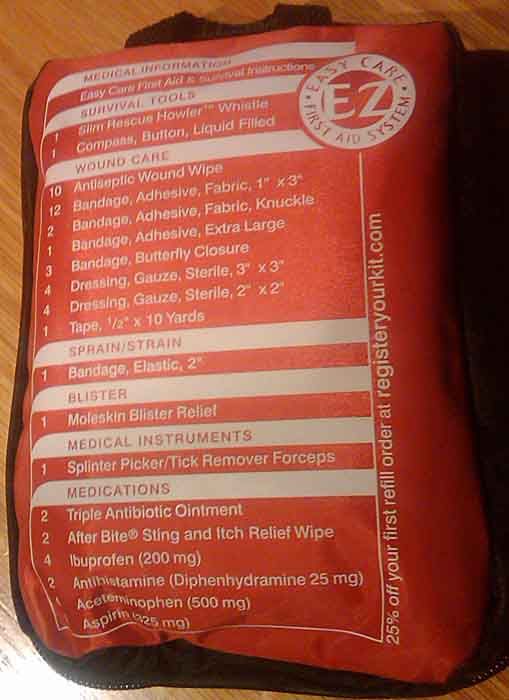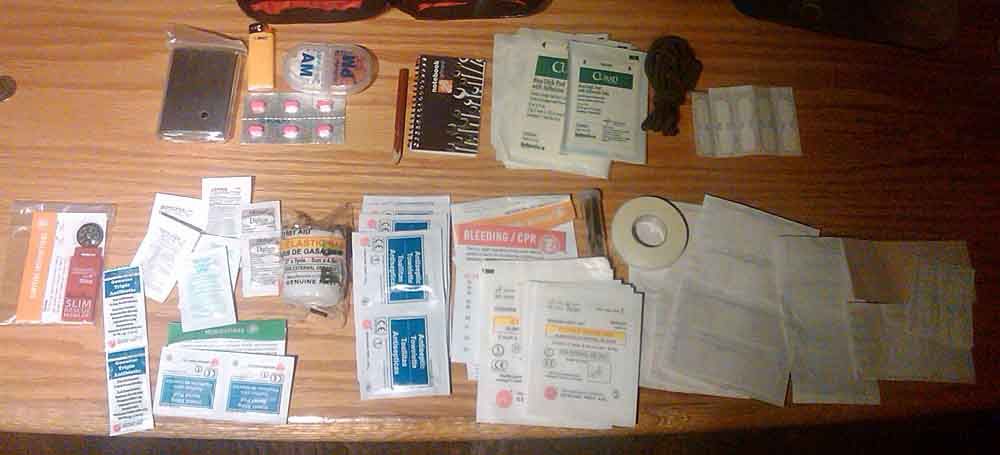For starters, is the gasket on that old can any good? Get a new one.
I'd get a decent family-sized Red Cross First Aid kit and then start adding to it, expanding on what it has, with more variety and quantity in pills, mole skin, balms and sunblock, wound dressings, trauma kit, tourniquets, lots of sterile dressing materials and those classic linen squares good for both bandage wrap and slings. Some lifeboat rations and water. Learn how to use everything in there. Think basic 1st aid and then add a bunch of stuff needed in the great outdoors. Bug repellant. Snakebite kit, analgesics, aloe for sunburn. Benadryl. Lots of stuff to clean and treat gouged hands / fingers, knees and elbow, wounds you'd get trying to fix a busted vehicle or free a stuck one. A light source. Fire. A plastic container of Lysol antibacterial wipes. Chemical hand / pocket warmers. A buttload of mylar emergency blankets, they don't take much room and are cheap in bulk.
Medical shears for cutting clothing. splint material. Couple quarts of Pedialite for fluid and electrolyte replacement (it's what plants crave)
Use large / 1gal Freezer ziplocs to organize by task, they're thicker / more durable. And being clear you can immediately see what's in them. Pack the box with the more commonly needed stuff near the top, but also keep the 'need to stop bleeding immediately' stuff near the top. Maybe even taped inside the lid, so it is always in a known spot.
eta here's a small kit I bought for a bugout bag, which I added extra materials to. Items in teh top half of the image I added, bottom half came in the kit. I liked the compact kit for my purpose, it was about big enough for a thick paperback book and it had a good amount of room still in it so it was easy to add things.
The right half is 'stop bleeding', the left half is everything else.
I also have a 'trauma kit' that includes some pressure bandages and blood clotting agent. Good for a big laceration, compound fracture.





